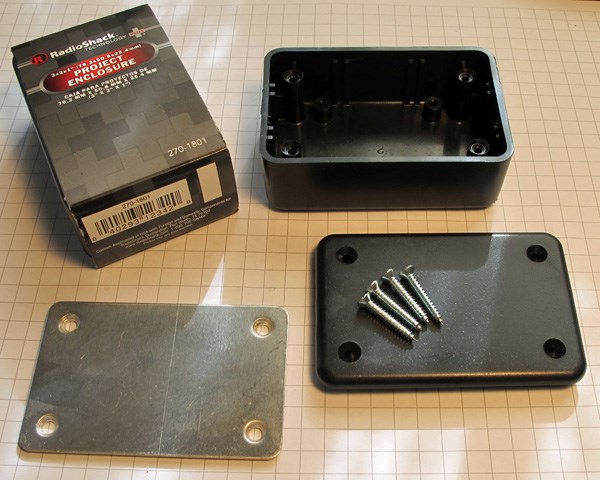Mulberry
USA
Asked
— Edited
Morning All
Does anyone have experience or an opinion on putting an EZ Board in a project enclosure box (like the ones from Radio Shack)? I want to protect from damage and dust inside my B9. My thoughts were to cut side vents for heat ventilation. I plan to get as large a box as possible to insure circulation.
Thanks,
Daniel


Looks great Daniel! The v3's need sweet cases too
Wow, loving the B9 Can't wait to see more of it!
Can't wait to see more of it!
Like what you've done with the v3 case too.
@Mulberry A 12V servo will work just fine if your input voltage to the board is also 12V
Hmmm. I thought the V3 couldn't handle 12 volts and an H-Bridge was needed to prevent damage when reversing the current. I say this because I blew-up (literally) a battery pack when I was messing about with a large servo. I didn't have an H-Bridge and when I stopped and reversed the direction the thing went boom (acid everywhere). Cool to see....after I calmed down
Daniel
I was talking about EZB4 where the board throws input voltage to the pins (no 5V reg on board for accessories)... If you use 12V to power the EZB4 board 12V will come out on the pins.. Powering a 12V servo no problem... EZB3 as I understand it has an on board 5V reg so pins have a max voltage of 5V...
Daniel, keep your H-bridge setup just as you have it. It makes reversing the DC motors simple and does provide protection if it has it built in. Some H-Bridges do, some dont. If you read the spec sheet on the web site where you bought yours at you will see your does provide reverse current and over voltage protection. That will protect you to a point but if you feed more current (amps) or voltage back into the h-bridge it will fail. Or worse, you could get a chain reaction allthe way back to your EZB. H-bridges are the way to go for reversing DC motors.
Also remember we are talking about several things here; Voltage, Current (amps), V3 EZB and V4 EZB.
V3 EZB has on board regulators that will power servos and other things at 5vdc from the power pins of each port. They will give you 5vdc no matter what voltage you power the board with. Each port has 3 pins; 5vdc, ground and signal. You get your 5vdc power to run servos and other things by hooking up to the 5v & ground pins. You can only pull up to 5 amps (current) total from all things powered from the V3 EZB. The 3rd pin (the singnal pin) also provides 5vcd but is not rated to provide any current (amps) draw. You cant power anything from this pin. It's just used to send signals to turn stuff on and off like servos. It does other things too but I wont get into that now.
V4 EZB will not have any voltage regulators on it. What ever voltage you power the board at will directly feed to the power pin (the old 5vdc pin) of each port. From what I hear you cant pull more then 5 amps total from anything or all that is powered by these ports. I'm not sure what the power min/max is for the V4 EZB but the V3 accepts between 5vdc and 17vdc (I could be a little off here. Please check for your self).
Hope this helps, Dave Schulpius
Yep. It does help Dave.
Thanks,
Daniel
@Dave Just to confirm, you are correct with the V3 voltages. I would say that the V4 probably is going to be around the same as it has an onboard regulator for the 3.3v circuit.
The amount of current the V4 can handle will ultimately come down to the PCB trace thickness, widths and lengths which are unknown so I wouldn't like to hazard any kind of guess.